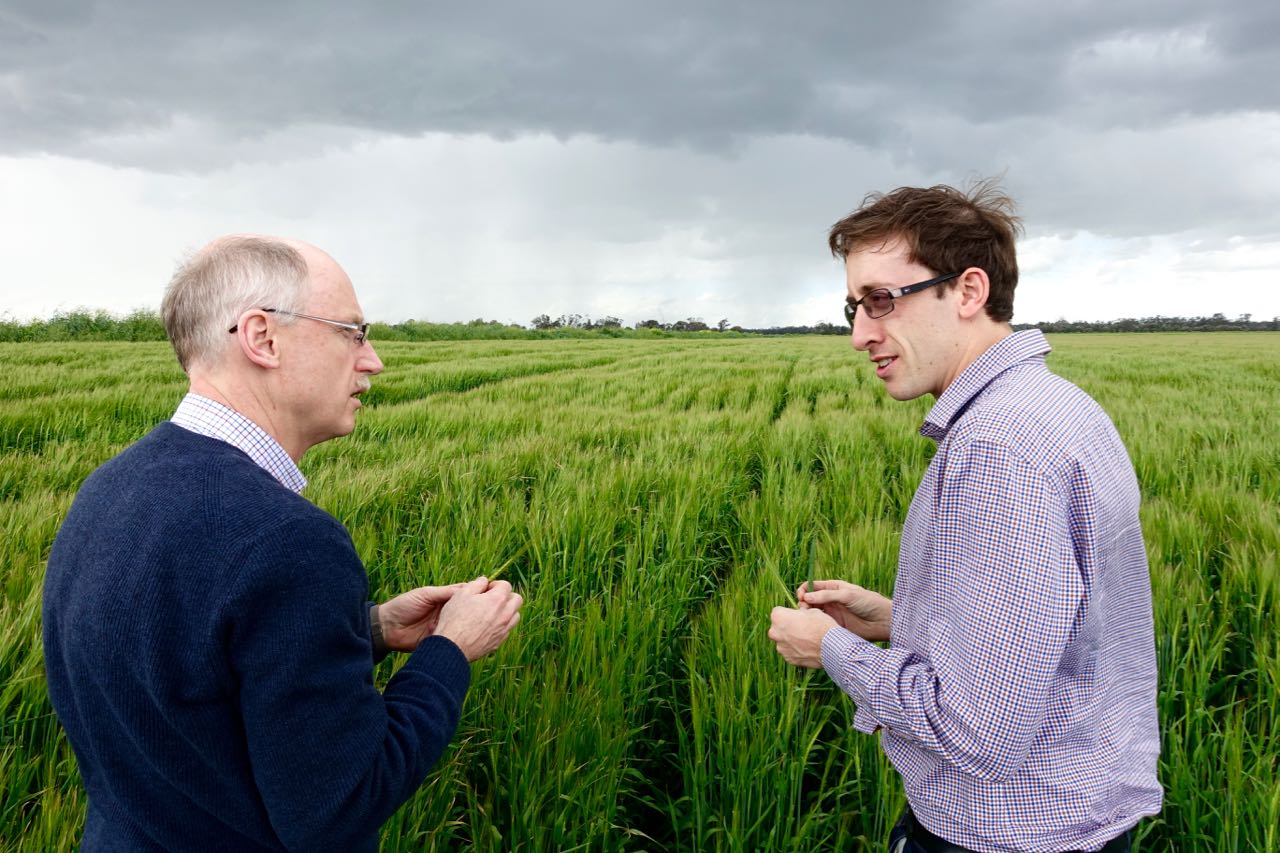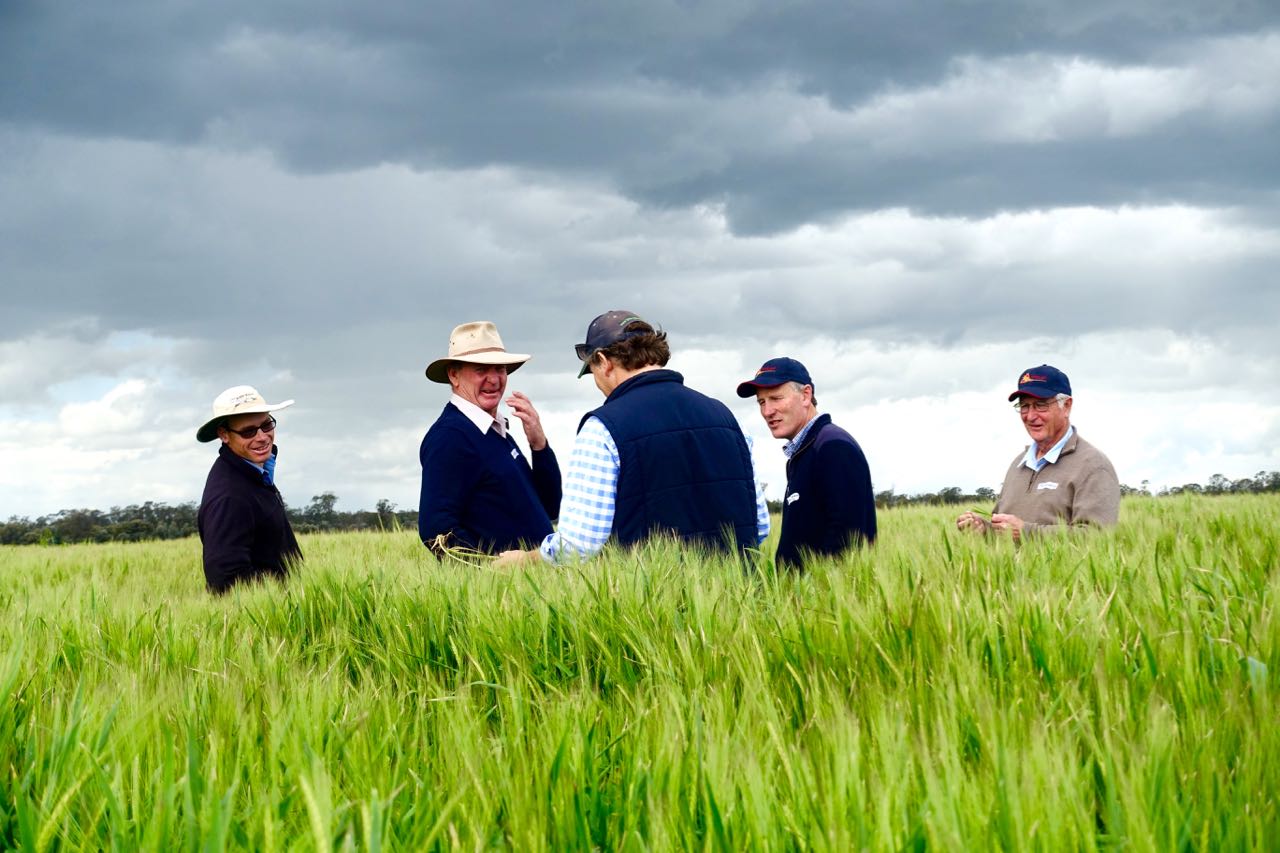
CUB getting closer to barley growers
Carlton & United Breweries has realised that the old adage that ‘good brewers make good beer’ is only partly true.
Last week, the company took some of its brewing team on a tour of barley crops in northern New South Wales organised by one of its key barley suppliers, Boolah Partnership, with Australian Brews News along for the ride.
It’s the first time brewers have joined what is becoming an annual expedition, previously only attended by CUB’s raw materials buyers and specialists.
While barley represents CUB’s biggest raw material spend, the brewer has only recently begunworking directly with and influencing growers, according to brewing materials manager Mark Goldsmith.
“In the past we’ve probably left that too much to our malt supplier, to be honest,” he said.
Goldsmith and CUB general manager of technical services, Stephen Exinger, attribute the hands-on approach partly to the 2012-13 experience of overhauling Crown Lager to champion its use of the highest quality ingredients, including a tighter malt specification.
“Because we were selecting specific parcels of higher quality, we came out and started visiting barley growers to make those selections,” Goldsmith said.
Exinger added: “We had to have certainty that not only was it meeting the tighter specs we’d placed on it, but that we could guarantee segregation… through their silo system all the way through the malting process so we could say, ‘that Crown Lager or Crown Golden Ale is definitely from those parcels and it has those attributes’.”
Goldsmith said: “We had not been close up until that point. Through that project we became closer to a number of growers, here and in Victoria and it’s built on from that.”
However, the closer ties have also become somewhat of a necessity given the evolution of the Australian barley market, which now cycles different varieties through much quicker than before, continually targeting improved yields and disease resistance. A variety may only stay on the market for five to ten years before it is superseded.
“We had a lot of stability in barley varieties ten years ago. A lot of varieties were developed by government agencies, and now because they’ve deregulated the barley varietal market it’s gone into the private enterprise,” said regional category manager for brewing raw materials, Glenn Bake.
“Barley breeders get paid on the tonnes of their barley varieties that come through the system. You can imagine they’re quite competitive, so we’re seeing a lot more barley varieties.”
With new varieties coming onto the market all the time, CUB needs to constantly assess firstly their ability to be processed efficiently through the brewery, but also whether they are able to produce a quality beer.
“Some varieties process better than others for us in the way we make our beers. Some just make it very challenging,” said Goldsmith.
“A key difference in between varieties is how much enzymes they have and how quickly they convert the starches into fermentable sugars. That’s one of the key variances and that challenges the guys in the brewhouse.
“We then need to make sure that the outcomes of the brewing process end up with quality beers. So, when we look at new varieties, they’ve got to put them through on their own, make a beer at the other end and everything has got to come out equal or better to what we’ve currently got.
“We don’t want to use a variety that comes out the other end and it’s a hazy beer or a beer that’s got no head retention,” he said.
CUB a niche player in barley
As part of the tour, Boolah Partnership’s agronomist, Leigh Norton, presented data indicating that a new barley variety called Compass is leaving others in the shade in terms of its returns for growers.
However, Compass is currently only able to be sold as feed barley, having not yet been approved as a malting variety (barley for human consumption), let alone been found to be suitable for brewing, which Goldsmith said is really only a “niche” end use for the crop.
“There’s eight million tonnes of barley grown in Australia and 2.5 million tonnes of that usually goes into malting. We use about 80,000 tonnes of barley, so we’re not really a big mover and shaker,” said Goldsmith.
“Compass is going to take over the area because it’s yielding so high. If it doesn’t suit us, we need to be in a position before that happens to make sure that we’ve got the varieties that we want, which will mean contracting and building relationships with the growers.”
This year the relationship with Boolah enabled CUB to request it to grow Westminster, a lower yielding variety that has been a solid performer for the brewer in Victoria.
Boolah meanwhile has the certainty of a long-term contract to support the multimillion dollar investments in machinery required to tend its 24,000 hectares of crops, which also include wheat, linseed, chickpeas and sorghum.
The trip was an eye-opener for technical brewer Dr Garry Menz, and licensed brands brewer Jason Hignett, both of whom were in attendance from CUB’s Yatala facility in Queensland.
“Really our quality improvement work starts here, from the base. Down to variety selection, how it’s grown, how it’s stored, how it’s harvested. what happens here impacts what you can do in a malthouse and that impacts what you can do in a brewhouse,” said Menz.
Hignett added: “People always say it takes a good brewer to make good beer. That’s not necessarily always the case, it also takes good raw materials to make good beer.”






